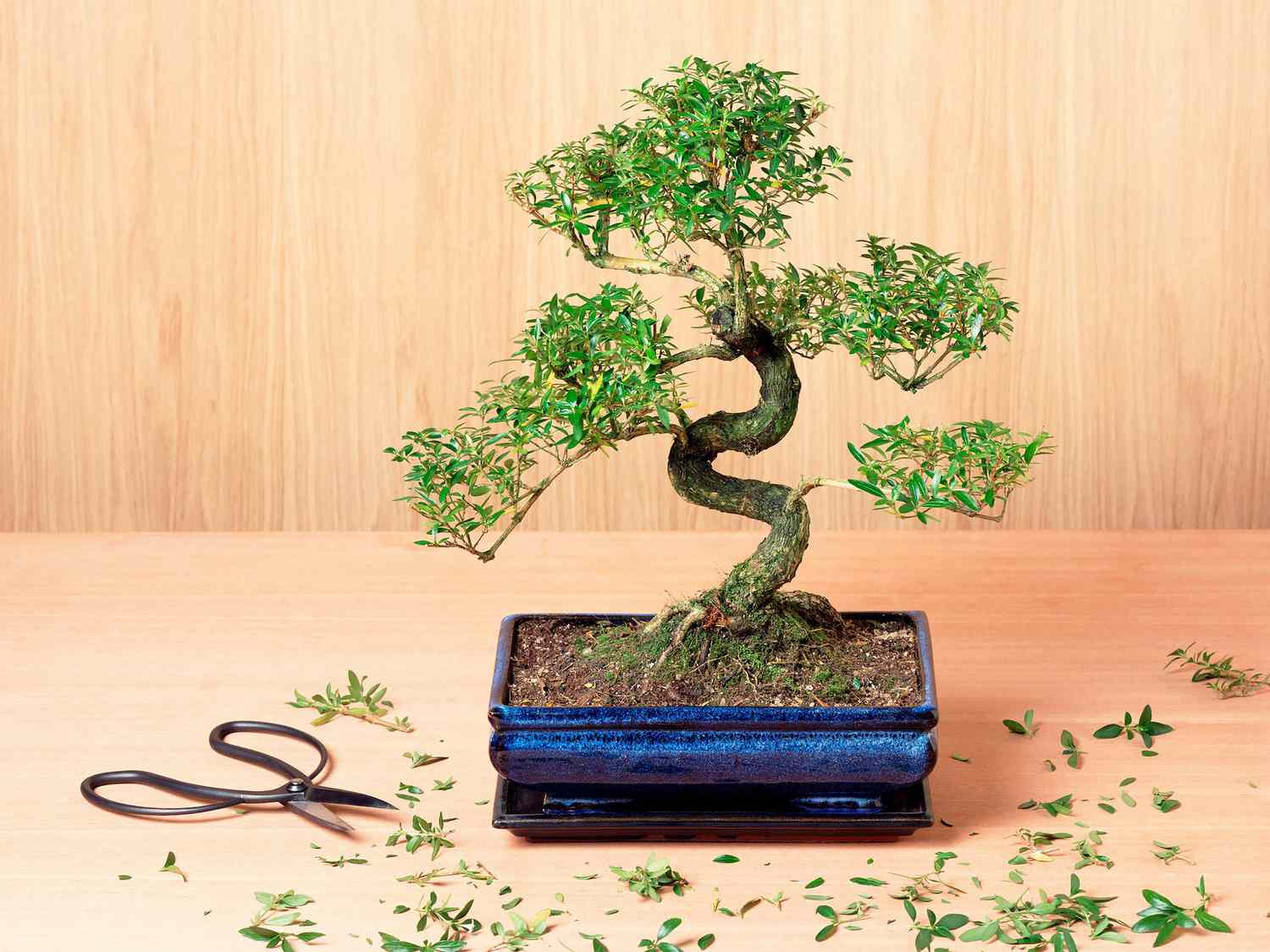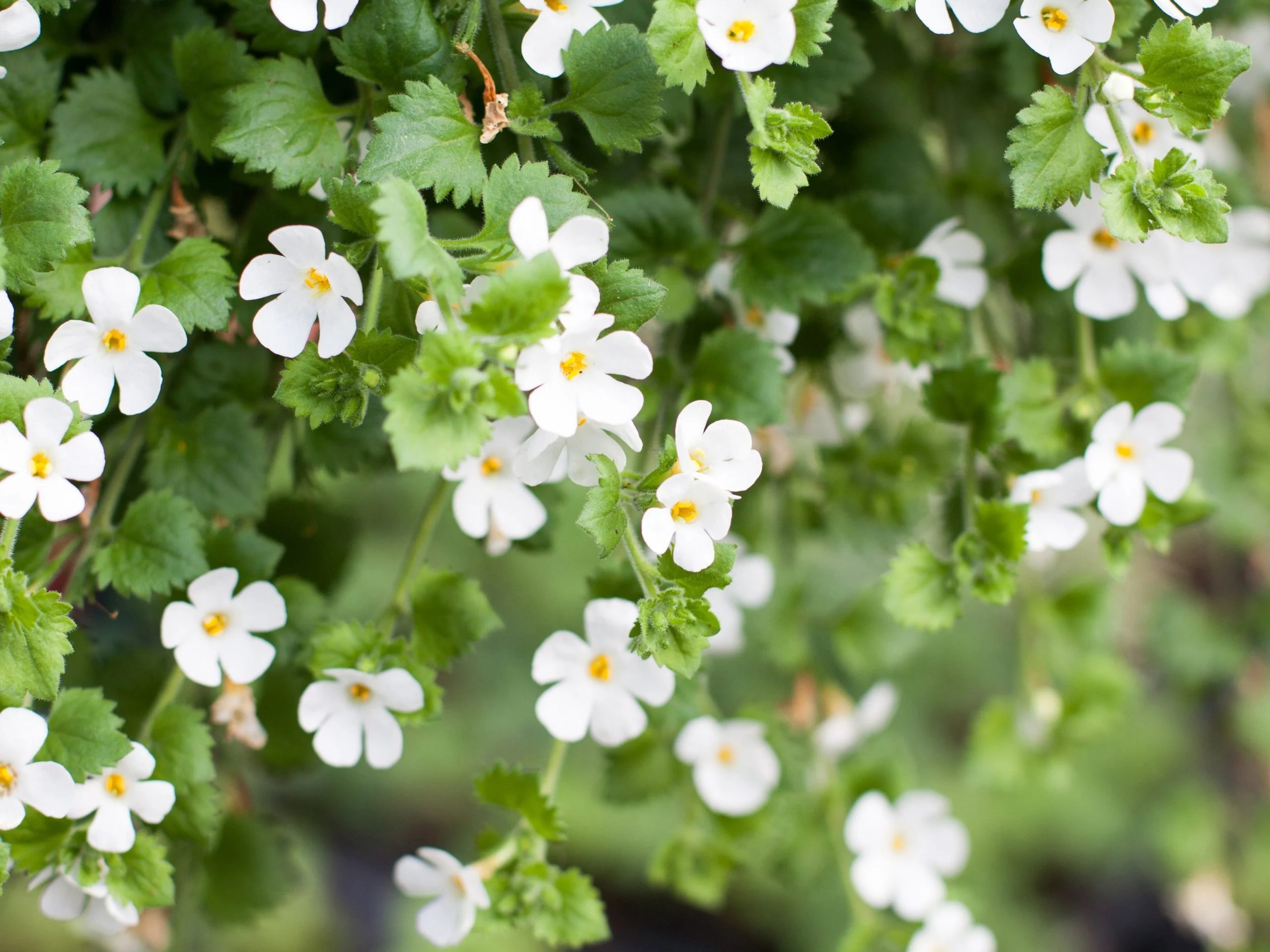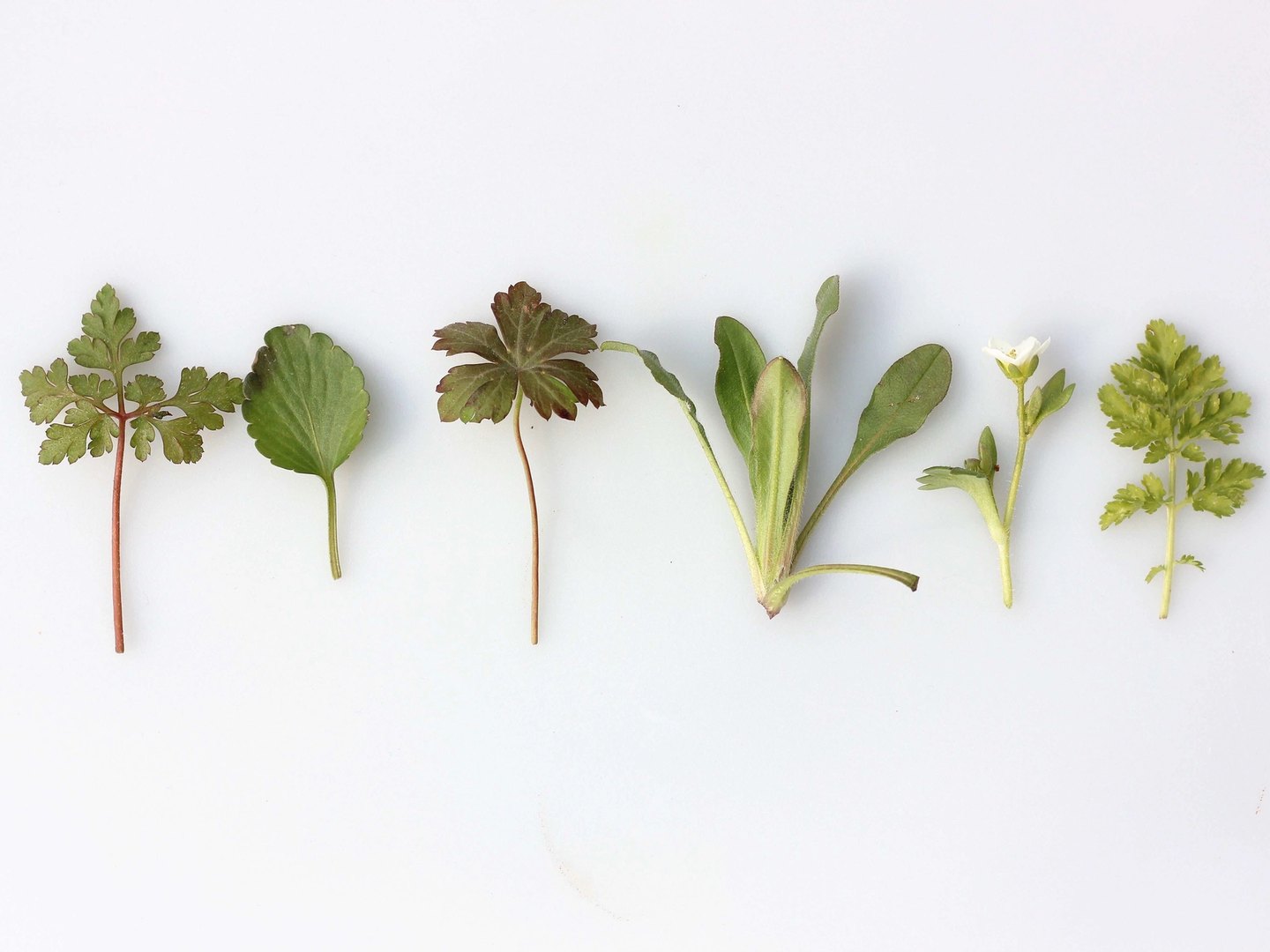Home>Gardening Tips and Tricks>Eco-Friendly Gardening>How Do Trees Help The Environment


Eco-Friendly Gardening
How Do Trees Help The Environment
Modified: January 22, 2024
Discover the positive impact of eco-friendly gardening on the environment. Learn how trees play a crucial role in creating a sustainable and healthy ecosystem.
(Many of the links in this article redirect to a specific reviewed product. Your purchase of these products through affiliate links helps to generate commission for Chicagolandgardening.com, at no extra cost. Learn more)
Table of Contents
Introduction
Welcome to the incredible world of eco-friendly gardening! In a time when environmental concerns are growing, adopting sustainable practices in our gardens is now more important than ever. Eco-friendly gardening focuses on cultivating a harmonious relationship between plants, wildlife, and the environment, allowing us to create beautiful and thriving ecosystems right in our own backyard.
By consciously choosing to implement eco-friendly gardening techniques, we can not only create stunning landscapes but also contribute to the preservation and restoration of our planet. In this article, we will explore the myriad benefits of eco-friendly gardening, with a particular focus on how it positively impacts the environment.
Whether you’re an experienced gardener or just starting out, eco-friendly gardening provides a unique opportunity to make a positive impact on the world around you. By understanding the various ways in which our gardening practices influence the environment, we can make informed decisions and take deliberate actions to promote sustainability.
Throughout this article, we will delve into the many environmental benefits of eco-friendly gardening, including climate regulation, air purification, carbon sequestration, erosion control, water regulation, biodiversity support, noise reduction, and even the aesthetic and health benefits it brings. So, let’s embark on this green gardening journey and discover how we can make a difference!
Climate Regulation
Trees and plants play a crucial role in regulating the climate and mitigating the effects of climate change. Through the process of photosynthesis, plants absorb carbon dioxide from the atmosphere and release oxygen, helping to reduce greenhouse gas emissions and combat global warming.
Additionally, the shade provided by trees helps to cool the surrounding environment. This natural air conditioning effect can significantly reduce energy consumption and lower the demand for artificial cooling systems, thereby decreasing the emission of harmful greenhouse gases.
In urban areas, where concrete and asphalt create what is known as the “urban heat island” effect, the strategic planting of trees and vegetation can alleviate the sweltering temperatures. Trees act as natural air filters, removing pollutants and particulate matter from the air and improving the overall air quality.
Moreover, trees contribute to the process of evapotranspiration, where moisture is released from the leaves and soil, creating a cooling effect. This process helps to regulate humidity and prevent excessive evaporation, maintaining a more balanced and stable climate.
By incorporating a variety of trees and plants in our eco-friendly gardens, we can enhance the climate-regulating abilities of our surroundings. Shade trees strategically placed around buildings can reduce the need for air conditioning, while proper plant selection and positioning can maximize the cooling effects and minimize water evaporation.
Furthermore, eco-friendly gardening practices such as water conservation, using organic fertilizers, and minimizing chemical pesticide usage also contribute to climate regulation. By maintaining healthy soil and supporting vibrant plant life, we can create resilient ecosystems that are more capable of adapting to and mitigating the impacts of climate change.
Air Purification
One of the significant benefits of eco-friendly gardening is its ability to purify the air we breathe. Trees and plants act as natural air filters, removing pollutants and improving air quality.
Through the process of photosynthesis, plants absorb carbon dioxide, nitrogen oxides, and other harmful gases from the air. They release oxygen as a byproduct, replenishing the atmosphere with clean and fresh air. This natural air purification system provided by plants helps to reduce respiratory problems and improve overall health and well-being.
In addition to absorbing gases, plants also trap and filter particulate matter from the air. Dust, pollen, and other microscopic particles get caught on plant surfaces and in the intricate structures of leaves. This natural filtering process helps to remove allergens and pollutants, making the air cleaner and healthier for us to breathe.
Furthermore, certain plant species have the ability to absorb and break down harmful volatile organic compounds (VOCs) found in indoor environments. These compounds are commonly found in household products, building materials, and furnishings, and can contribute to indoor air pollution. By incorporating air-purifying plants in our eco-friendly gardens, we can improve the air quality inside our homes.
When planning an eco-friendly garden, it’s important to choose plants known for their air-purifying properties. Some excellent choices include Spider Plants, Peace Lilies, English Ivy, and Areca Palms. These plants are not only aesthetically pleasing but also effective at filtering and refreshing the air.
By creating a green oasis in our gardens and incorporating air-purifying plants, we can enhance the quality of the air we breathe and promote a healthier living environment for ourselves and future generations.
Carbon Sequestration
Eco-friendly gardening plays a vital role in carbon sequestration, the process of capturing and storing carbon dioxide from the atmosphere. Trees and plants absorb carbon dioxide during photosynthesis and store it in their leaves, stems, and roots. This process helps to reduce the concentration of greenhouse gases in the atmosphere, mitigating the effects of climate change.
Trees are particularly effective at carbon sequestration due to their large size and long lifespan. They can store significant amounts of carbon throughout their lifetime, making them powerful allies in the fight against climate change. By planting trees in our gardens, we contribute to the sequestration of carbon, helping to offset our carbon footprint and reduce the impacts of global warming.
In addition to trees, other plants such as shrubs, grasses, and perennial flowers also contribute to carbon sequestration, albeit on a smaller scale. Incorporating a diverse range of plants in our eco-friendly gardens can maximize the amount of carbon captured from the atmosphere.
To enhance carbon sequestration, it is essential to prioritize the use of native plant species. Native plants have adapted to the local climate and are generally more resilient, requiring less water and care. They also tend to sequester carbon more effectively compared to non-native species.
Furthermore, sustainable gardening practices such as avoiding the use of chemical fertilizers and pesticides can also enhance carbon sequestration. Chemical inputs can disrupt soil microorganisms and reduce the ability of plants to store carbon. Instead, opting for organic fertilizers and natural pest control methods helps to maintain a healthy soil ecosystem, promoting enhanced carbon sequestration.
By embracing eco-friendly gardening techniques and incorporating a variety of plants in our outdoor spaces, we can contribute to the vital process of carbon sequestration, mitigating the impacts of climate change and building a more sustainable future.
Erosion Control
Eco-friendly gardening practices play a crucial role in preventing soil erosion and preserving the integrity of our landscapes. Soil erosion occurs when wind or water removes the top layer of soil, carrying it away and causing damage to ecosystems and agricultural lands.
One of the primary ways in which eco-friendly gardening helps control erosion is through the planting of vegetation. Trees, shrubs, and groundcover plants have extensive root systems that bind the soil together, reducing the risk of erosion. The roots act as anchors, holding the soil in place and preventing it from being washed away during heavy rains or blown away by strong winds.
In areas prone to erosion, it is essential to select plant species that are well-adapted to the local conditions. Native plants are often the best choice as they have evolved to thrive in the specific climatic and soil conditions of the region. Their deep root systems can penetrate the soil, creating a network that helps to stabilize slopes and prevent erosion.
Another eco-friendly strategy for erosion control is the use of mulch. Applying a layer of organic mulch such as wood chips, straw, or compost helps to protect the soil from erosion by reducing the impact of raindrops, preventing surface runoff, and retaining moisture. The mulch also acts as a natural weed suppressant, reducing the need for herbicides.
Terracing the land is another effective technique for controlling erosion. By creating leveled terraces along slopes, water is able to slow down and spread out, minimizing the erosive force on the soil. Planting vegetation on these terraces further aids in preventing erosion and creating a visually appealing landscape.
Contour plowing and strip cropping are additional methods to combat soil erosion. By plowing along the contour lines of the land rather than vertically, and planting alternating strips of different crops or cover crops, water runoff is slowed, and soil erosion is reduced.
By implementing these eco-friendly gardening techniques, we can effectively control erosion and preserve the health and productivity of our soil. By protecting the soil, we not only maintain the integrity of our own landscapes but also contribute to the overall health of our ecosystems.
Water Regulation
Eco-friendly gardening practices play a vital role in water regulation, helping to manage the quantity and quality of water in our environment. By adopting sustainable gardening techniques, we can minimize water runoff, conserve water, and protect water sources from pollution.
One of the key benefits of eco-friendly gardening is its ability to reduce stormwater runoff. When rainwater falls on impervious surfaces like concrete or asphalt, it quickly runs off and carries pollutants, such as chemicals and sediment, into nearby water bodies. However, by incorporating more permeable surfaces in our gardens, such as gravel paths or porous paving, we allow rainwater to infiltrate the soil, reducing runoff and the risk of water pollution.
Strategic landscaping can also help manage water runoff. By creating swales or rain gardens, which are shallow depressions planted with native plants, we can capture and retain rainwater, allowing it to slowly infiltrate the soil. These features act as natural filters and help to recharge groundwater aquifers, improving overall water quality and availability.
Additionally, eco-friendly gardening promotes water conservation through practices such as mulching and proper irrigation techniques. Applying a layer of organic mulch around plants helps to retain soil moisture, reducing the need for frequent watering. The use of efficient irrigation systems, such as drip irrigation or rainwater harvesting, allows us to water our plants more effectively, minimizing water waste.
By maintaining healthy soil through organic practices, we also enhance its water-holding capacity. Healthy soil with a rich organic matter content can absorb and retain water more efficiently, reducing the need for frequent irrigation and supporting the long-term resilience of our gardens.
Incorporating native plants in our eco-friendly gardens is another effective way to promote water regulation. Native plants have adapted to local conditions and are often more drought-resistant, requiring less water to thrive. By choosing plants that are well-suited to the climate and soil of our region, we can minimize water usage and create sustainable landscapes.
By adopting eco-friendly gardening practices, we can contribute to water regulation efforts, preserving this precious resource for future generations. Through water conservation and pollution prevention, we can create landscapes that are not only beautiful but also environmentally responsible.
Biodiversity Support
Eco-friendly gardening practices go hand in hand with biodiversity conservation, providing essential support for a wide range of plant and animal species. Creating diverse and vibrant ecosystems in our gardens promotes biodiversity and helps to preserve the delicate balance of our natural environment.
By incorporating a variety of plant species in our eco-friendly gardens, we provide food, shelter, and habitat for a wide array of animals, including birds, insects, and small mammals. Native plants, in particular, are essential for supporting local wildlife, as they have co-evolved with native animals, providing them with the specific resources they need to thrive.
Flowering plants, in particular, attract pollinators such as bees, butterflies, and hummingbirds. These important pollinators play a crucial role in the reproduction of many plant species, ensuring the production of fruits, seeds, and new generations of plants. By providing a diverse selection of flowering plants with different bloom times, we can support a continuous food source for pollinators throughout the seasons.
In addition to supporting pollinators, biodiversity-friendly gardens also encourage beneficial insects and predators that help control pest populations naturally. Ladybugs, lacewings, and predatory wasps feed on aphids and other garden pests, reducing the need for chemical pesticides.
Water features such as ponds or small water bodies can also contribute to biodiversity by providing a habitat for amphibians, aquatic insects, and birds. By including plants that thrive in wetland conditions, we can create mini-ecosystems that sustain a rich diversity of life.
Furthermore, eco-friendly gardening can play a role in the conservation of endangered plant species. By cultivating and propagating native plants, we contribute to the preservation of their genetic diversity and help ensure their long-term survival.
By prioritizing biodiversity in our gardens, we support the interconnectedness of all living organisms and contribute to the overall health of our ecosystems. The more diverse and abundant our native flora and fauna, the stronger and more resilient our natural world becomes.
Noise Reduction
Eco-friendly gardening practices not only provide environmental benefits but also contribute to noise reduction, creating a more peaceful and tranquil outdoor environment. The strategic use of plants and landscaping features can help buffer and absorb noise, allowing us to enjoy a quieter and more serene space.
Trees, shrubs, and hedges are excellent natural sound barriers. They can help block and absorb unwanted noise from nearby roads, construction sites, or other sources. Dense vegetation can act as a physical barrier, reducing the transmission of sound waves and creating a quieter outdoor space.
Additionally, the rustling leaves and branches of trees and the soft swaying of grasses create a soothing background noise that can help mask or muffle unwanted sounds. This effect can be particularly effective in urban areas where noise pollution is prevalent.
Water features such as fountains, waterfalls, or ponds can also contribute to noise reduction. The sound of flowing water can have a calming effect and help drown out disruptive noises. These features not only enhance the aesthetic appeal of our eco-friendly gardens but also create a peaceful ambiance.
Strategic placement of plants and landscaping features can maximize noise reduction benefits. Planting trees and shrubs in rows or clusters along the perimeter of the garden can create a dense barrier that helps absorb sound. Adding layers of vegetation with varying heights can further enhance noise reduction by creating additional sound barriers.
It’s important to note that not all plants are effective for noise reduction. Evergreen plants with dense foliage and a combination of broadleaf and needled varieties work best in absorbing sound waves. Consulting with a landscaping professional or nursery can help identify the most suitable plants for noise reduction in your specific area.
By incorporating noise reduction strategies in our eco-friendly gardens, we can create an oasis of tranquility, shielded from the noises of the outside world. This allows us to relax, unwind, and truly connect with nature, benefiting both our physical and mental well-being.
Aesthetics and Health Benefits
Eco-friendly gardening not only benefits the environment but also provides aesthetic and health benefits that enhance our overall well-being. Creating a beautiful and harmonious outdoor space has a positive impact on our mental and emotional health, while the physical activities involved in gardening contribute to our physical fitness.
One of the most obvious advantages of eco-friendly gardening is the visual appeal it brings to our surroundings. Thoughtfully designed gardens with a variety of plants, colors, and textures create a captivating and inviting landscape. The lush foliage, vibrant blooms, and the play of light and shade can uplift our spirits and provide a sense of tranquility and peace.
In addition to the visual enhancement, spending time in nature and green spaces has been scientifically proven to reduce stress levels and improve mental health. The calming effect of greenery and natural elements can help alleviate anxiety, boost mood, and increase overall well-being. Whether it’s a small patio garden or a sprawling landscape, being in the presence of nature has a rejuvenating effect on our mind and body.
Eco-friendly gardening also offers physical health benefits. Engaging in gardening activities, such as digging, planting, and weeding, provides moderate physical exercise that can help improve cardiovascular health, muscular strength, and flexibility. Spending time outdoors under the sun allows our bodies to absorb vitamin D, crucial for bone health and immune function.
Gardening also offers an opportunity to connect with the earth and engage in mindful practices. The act of nurturing and caring for plants fosters a sense of responsibility, patience, and mindfulness. It allows us to slow down, be present in the moment, and cultivate a deeper connection with nature and the environment.
Moreover, eco-friendly gardening promotes a healthier living environment. By avoiding the use of harmful pesticides and opting for organic practices, we create a space free from chemical toxins. This benefits both our own health and the health of the ecosystem by preserving beneficial insects, birds, and other wildlife.
By embracing eco-friendly gardening practices, we can create beautiful outdoor spaces that not only delight the senses but also support our overall well-being. The aesthetics and health benefits of a garden go hand in hand, creating an environment that nourishes our mind, body, and soul.
Conclusion
Eco-friendly gardening is more than just a hobby or a way to beautify our surroundings. It is a powerful tool that allows us to make a positive impact on the environment, promote sustainability, and improve our overall well-being. Through sustainable gardening practices, we can contribute to climate regulation, air purification, carbon sequestration, erosion control, water regulation, biodiversity support, noise reduction, and enjoy the aesthetic and health benefits that come with it.
By consciously choosing to implement eco-friendly gardening techniques, such as planting native species, conserving water, avoiding chemical pesticides, and promoting biodiversity, we can create vibrant and resilient ecosystems in our own backyard. These ecosystems provide vital services to the environment, supporting the balance of nature and helping to mitigate the impacts of climate change.
Eco-friendly gardening also brings numerous personal benefits. It enhances our mental and emotional well-being by creating beautiful and serene spaces that promote relaxation and reduce stress. Engaging in gardening activities provides physical exercise, connecting us with nature and allowing us to appreciate the wonders of the natural world. Additionally, the aesthetic appeal of eco-friendly gardens provides us with a visual feast and a sense of pride in our efforts to create sustainable and harmonious outdoor spaces.
As we continue to face environmental challenges, eco-friendly gardening becomes an increasingly important practice. By embracing sustainable gardening practices, we can all play a part in conserving resources, protecting biodiversity, and mitigating the impacts of climate change. Every plant we nurture, every drop of water we save, and every eco-friendly action we take in our gardens contributes to a greener, healthier, and more sustainable future.
So, let’s pick up our gardening tools, put on our sun hats, and embark on the journey of eco-friendly gardening. Together, we can make a difference – one garden at a time.









